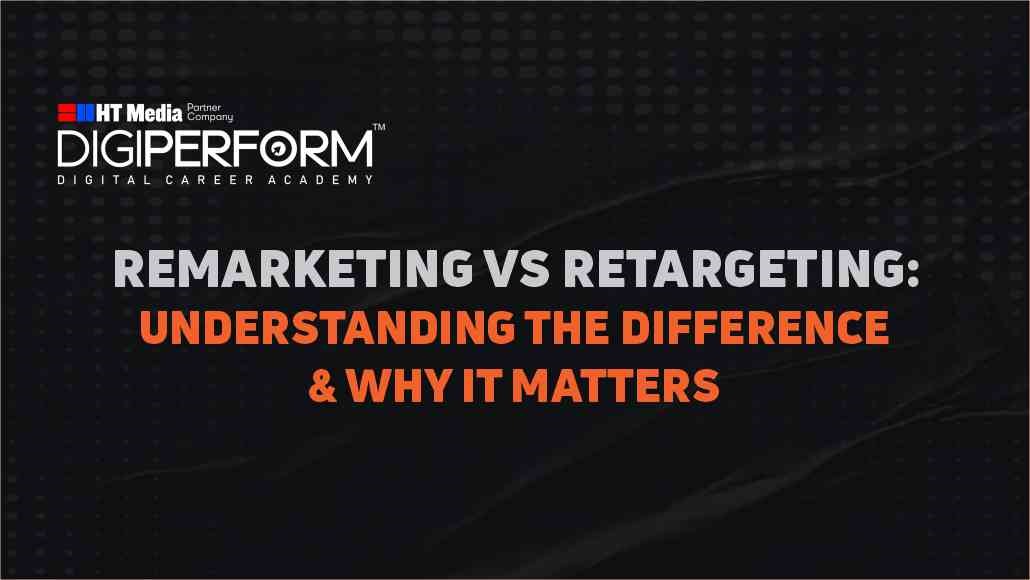In the fast-paced world of digital advertising, two terms often come up that can be easily confused: remarketing and retargeting. You’ve probably heard both, but what’s the real difference? And more importantly, why does it matter to you and your business?
Whether you’re a seasoned marketer or just starting, understanding these concepts is key to running successful ad campaigns. Don’t worry—we’ve got you covered. Let’s break it down in a way that’s easy to understand, helping you get the knowledge you need to boost your digital advertising efforts.
The strategy should focus on building awareness, engaging potential customers, and ultimately converting them into sales. You can read the full article here.
What is Remarketing?
First off, let’s talk about remarketing. Simply put, remarketing is a strategy where you show ads to people who’ve already interacted with your brand. This could mean someone who’s visited your website, opened one of your emails, or watched one of your videos. Essentially, it’s about reminding them that you exist, so they don’t forget about you.
Remarketing is like saying, “Hey, I remember you, and I’ve got something you might like.” It could be a special discount, an exciting new product, or simply a reminder of what they were checking out on your website.
For example, let’s say someone visits your online store, looks at a few shoes, but leaves without making a purchase. Remarketing allows you to show them ads for those exact shoes while they browse other websites or social media platforms. This increases the chances they’ll come back and complete their purchase.
For more insights on improving your online presence, check out our guide on maximizing brand reach with organic social media marketing.
What is Retargeting?
Now, let’s move on to retargeting. While it might sound similar, retargeting is a more specific form of remarketing. Instead of just showing ads to anyone who’s interacted with your brand, retargeting focuses on people who’ve already shown a higher level of interest or intent—usually by taking specific actions on your website.
For example, retargeting targets users who’ve added items to their shopping cart but haven’t checked out. Maybe they got distracted or decided not to buy at that moment. With retargeting, you can show them a more targeted ad—often featuring the exact items they left behind—encouraging them to return and finish their purchase.
This is where things get a bit more personal. With retargeting, you’re getting super specific about the actions your users have taken and creating ad targeting that speaks directly to their needs.
Key Differences Between Remarketing vs Retargeting
So, what sets remarketing vs. retargeting apart? Let’s break it down into bite-sized pieces:
- Scope:
- Remarketing is broader—it could involve anyone who’s interacted with your brand in some way, like visiting your website, watching a video, or opening an email.
- Retargeting is more focused. It’s about reaching people who’ve done something more specific, like adding items to their cart or visiting a product page multiple times.
- Platforms:
- Remarketing often takes place across multiple platforms. For example, you might target people through email marketing, social media ads, or display ads on websites they visit.
- Retargeting, however, typically uses cookies or tracking pixels to track customer actions on your site and then shows targeted ads based on those behaviors. These ads usually appear on display networks like Google Ads or Facebook.
For more on how to leverage email marketing for your campaigns, check out our guide on running a successful email marketing campaign.
- Personalization:
- Remarketing ads are often more general and designed to bring people back to your website, regardless of what they interacted with.
- Retargeting tends to be much more personalized, showing customers exactly what they were looking at on your site, or offering discounts on the items they left behind.
Why Does Understanding Remarketing vs Retargeting Matter?
You might be wondering: why is it so important to understand the difference between remarketing vs retargeting? Here’s why:
- Better Ad Targeting:
- Ad targeting is all about reaching the right person with the right message at the right time. By understanding these two strategies, you can use remarketing to keep your brand in front of a wider audience and retargeting to close the deal with people who are already on the verge of converting.
- This allows you to make more strategic decisions about where to spend your advertising budget, ensuring you’re not wasting money on people who may not be interested.
- Maximize Conversions:
- Remarketing gives you the chance to reach users who may have been interested in your product but need a little nudge to come back and complete the action (e.g., making a purchase, signing up, etc.).
- Retargeting, on the other hand, focuses on users who have already demonstrated higher intent, meaning you’re more likely to convert them. If someone has already placed items in their cart, they’re close to purchasing—and retargeting is designed to bring them back to finish the transaction.
learn more about optimizing your conversions, check out our guide on how to convert traffic into conversions.
- Improved Customer Behavior Insights:
- Both strategies give you valuable insights into customer behavior. With remarketing, you’re learning about how users engage with your content in a broad sense. With retargeting, you’re gaining deeper insights into which actions are driving conversions and which ones need more attention.
- Enhanced Customer Experience:
- The more personalized and relevant your ads are, the better the user experience. Retargeting allows you to show customers exactly what they’re interested in, making them feel seen and understood. Remarketing ensures your brand stays in the customer’s mind, reminding them of what they were interested in before.
When to Use Remarketing vs Retargeting
- Use Remarketing When:
- You want to re-engage users who’ve interacted with your brand in any way.
- You’re looking to target a wider audience, including those who may have visited your website but not shown strong intent yet.
- You’re utilizing various platforms like email, social media, and display ads to remind people of your brand.
- Use Retargeting When:
- You want to focus on users who’ve already shown intent by taking specific actions on your website (like adding items to their cart or viewing a product page).
- You’re looking to close the deal and convert visitors who are most likely to make a purchase.
- You’re ready to use more personalized ads based on user behavior.
Conclusion: Why Understanding Remarketing vs Retargeting Matters
In conclusion, both remarketing and retargeting are powerful tools in your digital advertising strategies toolkit. While they may seem similar, understanding the difference between the two can help you target the right customers at the right time, maximize your ROI, and improve your overall conversion rates.
By using remarketing to stay top-of-mind with a broad audience and retargeting to engage high-intent users, you can craft ads that resonate with your customers and lead to more conversions.
So next time you plan your campaigns, think carefully about whether remarketing or retargeting is the best strategy for your goal. Master these tactics, and watch your digital marketing efforts thrive!
So next time you plan your campaigns, check out our guide on building an effective digital marketing strategy for 2024







